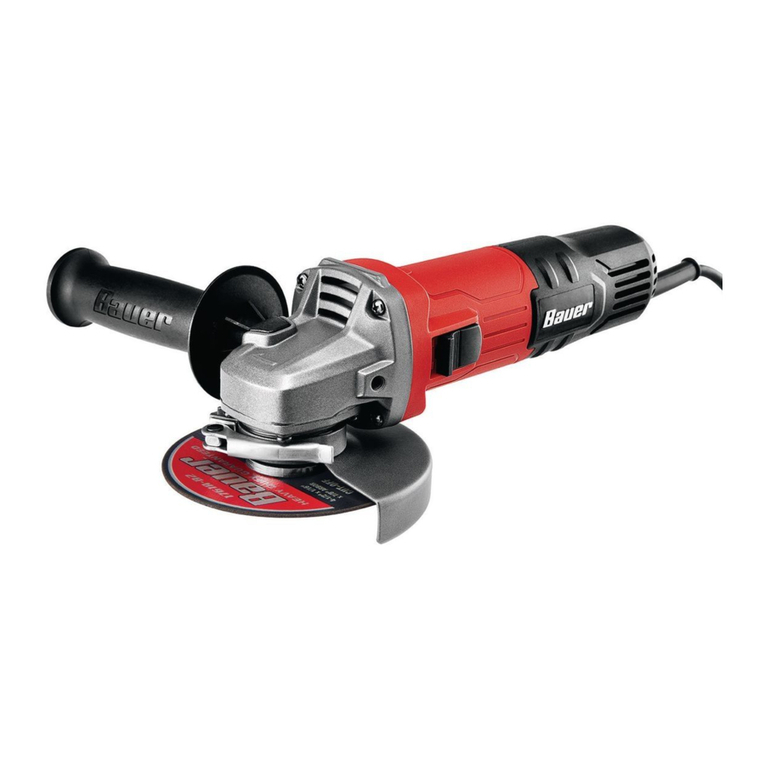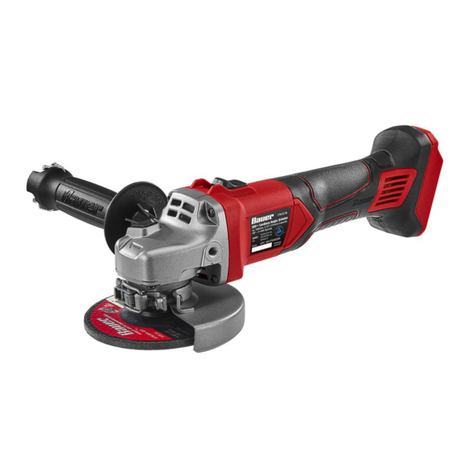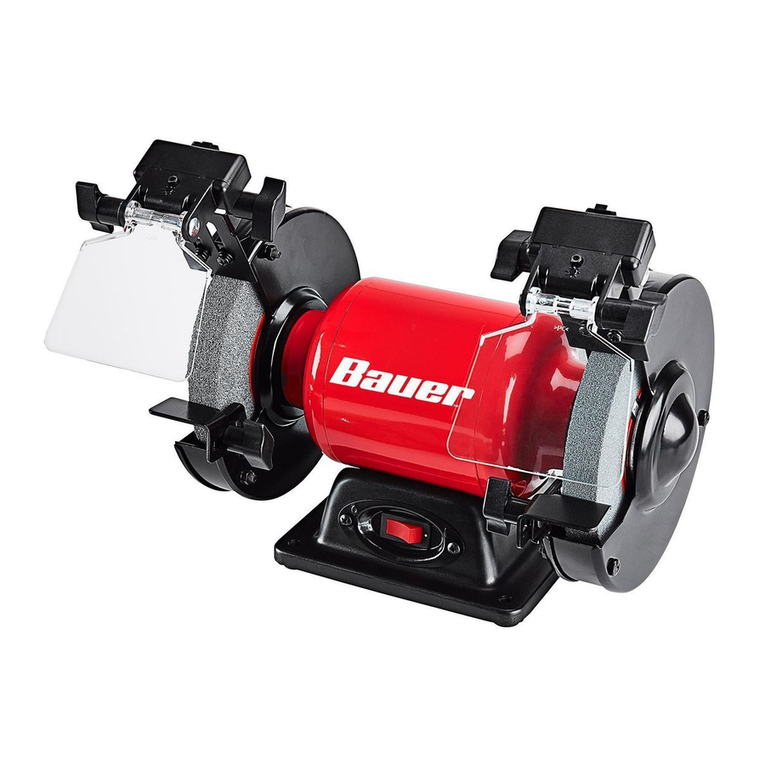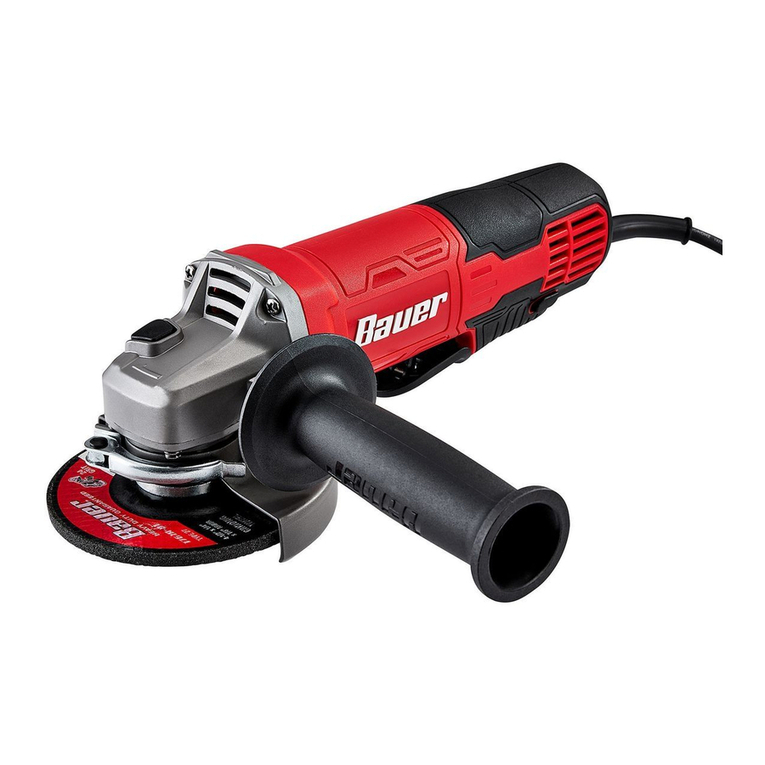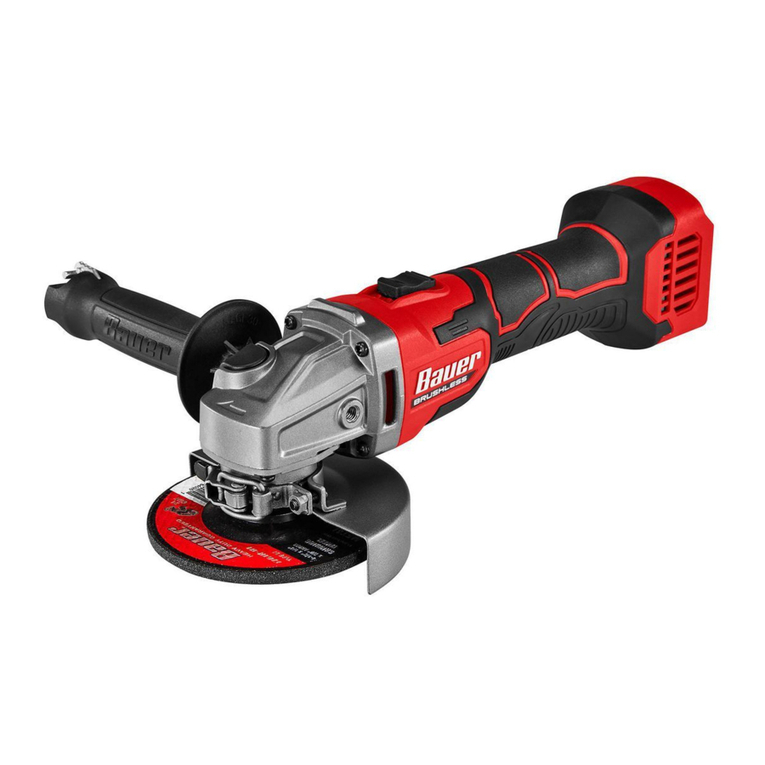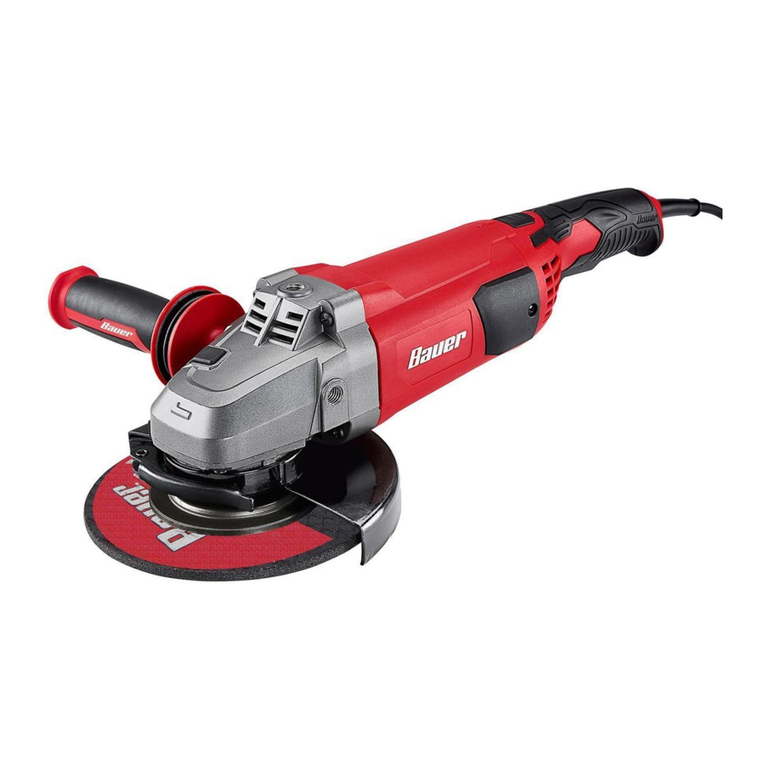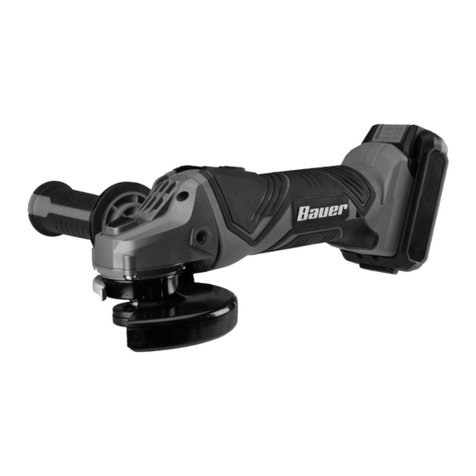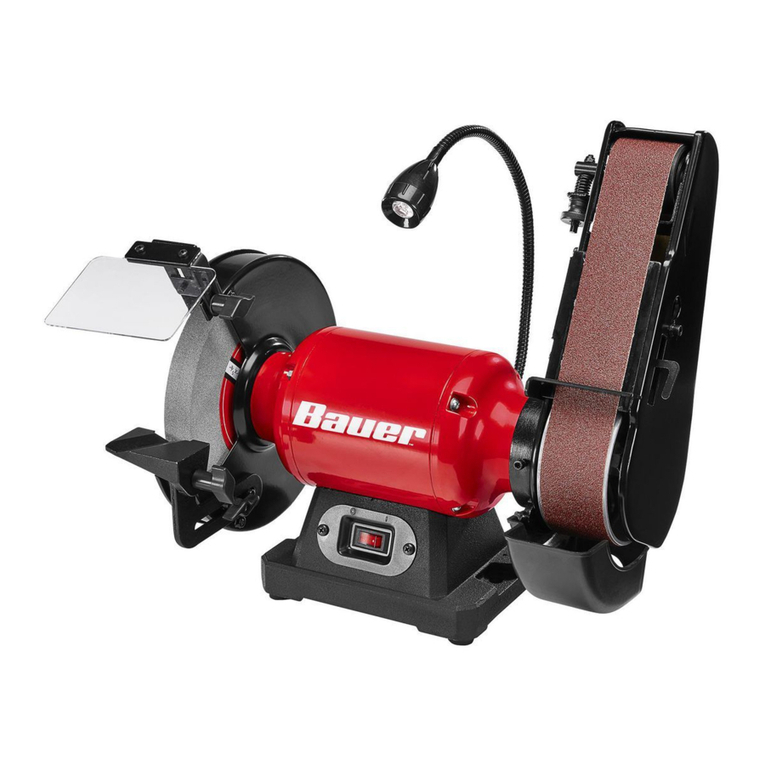
Page 5For technical questions, please call 1-888-866-5797.Item 59300
SAFETYOPERATIONMAINTENANCE SETUP
Grinder Tool Safety Warnings
For Your Own Safety Read Instruction
Manual Before Operating Tool Grinder
1. Wear eye protection.
2. Use grinding wheel suitable for speed of grinder.
3. Replace cracked wheel immediately.
4. Always use guards and eye shields.
5. Do not overtighten wheel nut.
6. Use only flanges furnished with the grinder.
7. Adjust distance between wheel and work rest
to maintain 0.125 inch or less separation as the
diameter of the wheel decreases with use.
8. Frequently clean grinding dust from beneath grinder.
9. Wear a full face shield over ANSI-approved
safety goggles during use.
10. Do not grind with side of wheel unless wheel is
specifically designed for that type of grinding.
11. DO NOT OPERATE WITH ANY GUARD
DISABLED, DAMAGED, OR REMOVED. Moving
guards must move freely and close instantly.
12. The use of accessories or attachments not
recommended by the manufacturer may
result in a risk of injury to persons.
13. When servicing use only identical replacement parts.
14. Do not depress the spindle lock when
starting or during operation.
15. Only use safety equipment that has been approved
by an appropriate standards agency. Unapproved
safety equipment may not provide adequate
protection. Eye protection must be ANSI-approved
and breathing protection must be NIOSH-approved
for the specific hazards in the work area.
16. Stay alert, watch what you are doing and use
common sense when operating a power tool.
Do not use a power tool while you are tired or
under the influence of drugs, alcohol or medication.
A moment of inattention while operating power
tools may result in serious personal injury.
17. Industrial applications must follow OSHA guidelines.
18. Maintain labels and nameplates on the tool.
These carry important safety information.
If unreadable or missing, contact
Harbor Freight Tools for a replacement.
19. Avoid unintentional starting.
Prepare to begin work before turning on the tool.
20. People with pacemakers should consult their
physician(s) before use. Electromagnetic fields in
close proximity to heart pacemaker could cause
pacemaker interference or pacemaker failure.
21. The warnings, precautions, and instructions
discussed in this instruction manual cannot cover all
possible conditions and situations that may occur.
It must be understood by the operator that
common sense and caution are factors
which cannot be built into this product,
but must be supplied by the operator.
Vibration Safety
This tool vibrates during use. Repeated or
long-term exposure to vibration may cause
temporary or permanent physical injury,
particularly to the hands, arms and shoulders.
To reduce the risk of vibration-related injury:
1. Anyone using vibrating tools regularly or for an
extended period should first be examined by a
doctor and then have regular medical check-ups
to ensure medical problems are not being caused
or worsened from use. Pregnant women or
people who have impaired blood circulation to
the hand, past hand injuries, nervous system
disorders, diabetes, or Raynaud’s Disease should
not use this tool. If you feel any medical or
physical symptoms related to vibration (such as
tingling, numbness, and white or blue fingers),
seek medical advice as soon as possible.
2. Do not smoke during use. Nicotine reduces
the blood supply to the hands and fingers,
increasing the risk of vibration-related injury.
3. Wear suitable gloves to reduce the
vibration effects on the user.
4. Use tools with the lowest vibration when there
is a choice between different processes.
5. Include vibration-free periods each day of work.
6. Grip workpiece as lightly as possible (while still
keeping safe control of it). Let the tool do the work.
7. To reduce vibration, maintain the tool as
explained in this manual. If any abnormal
vibration occurs, stop use immediately.
SAVE THESE INSTRUCTIONS.
